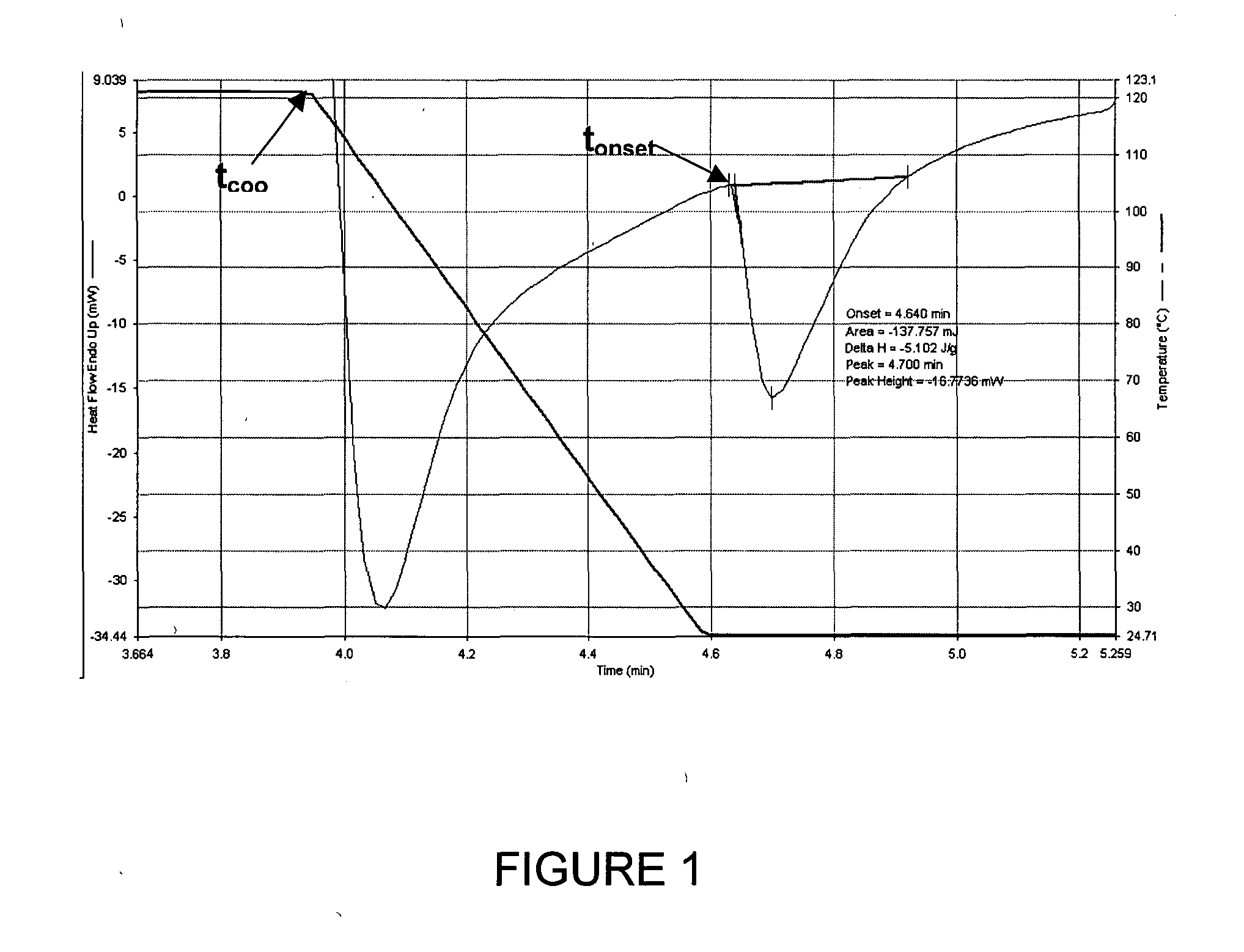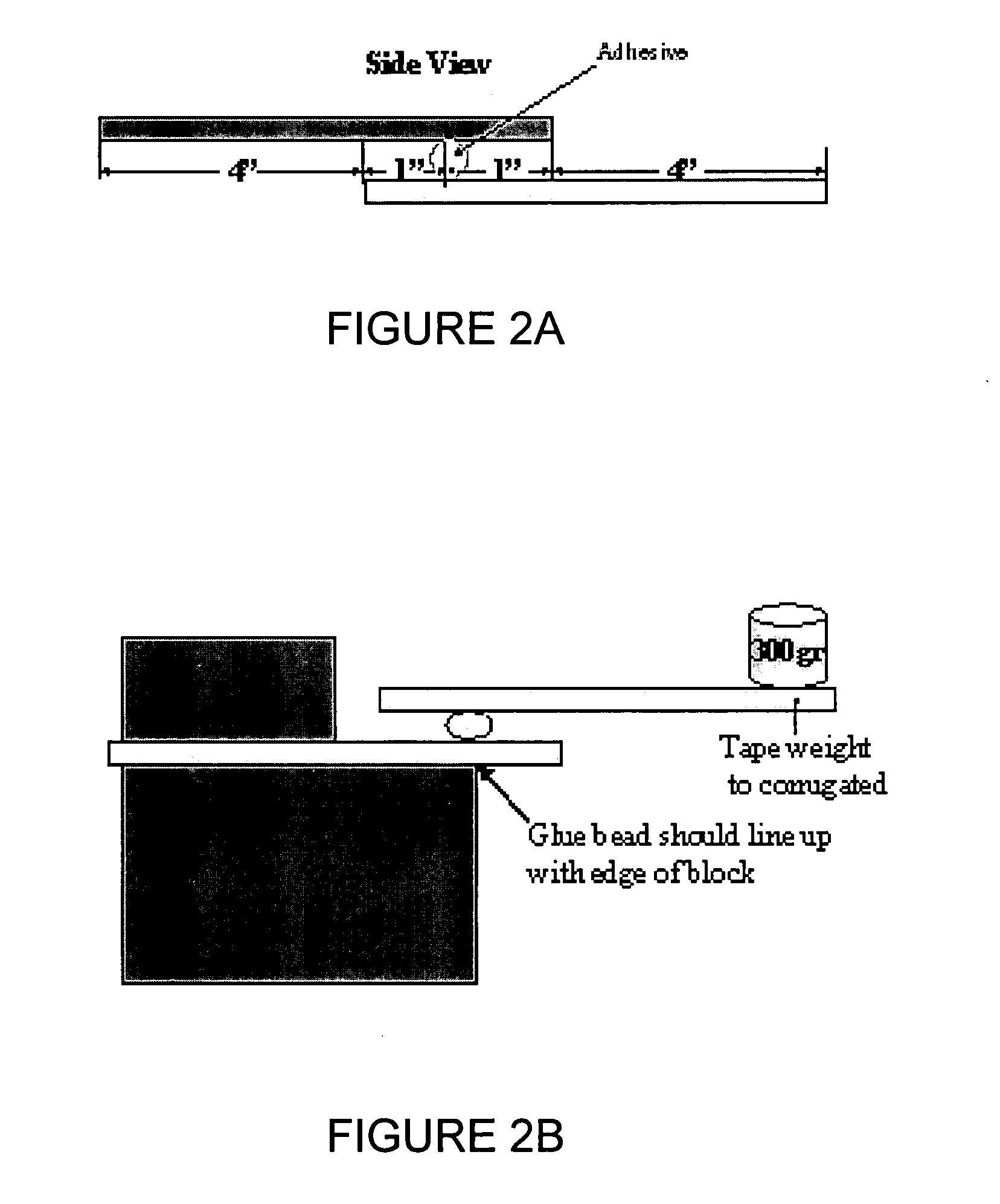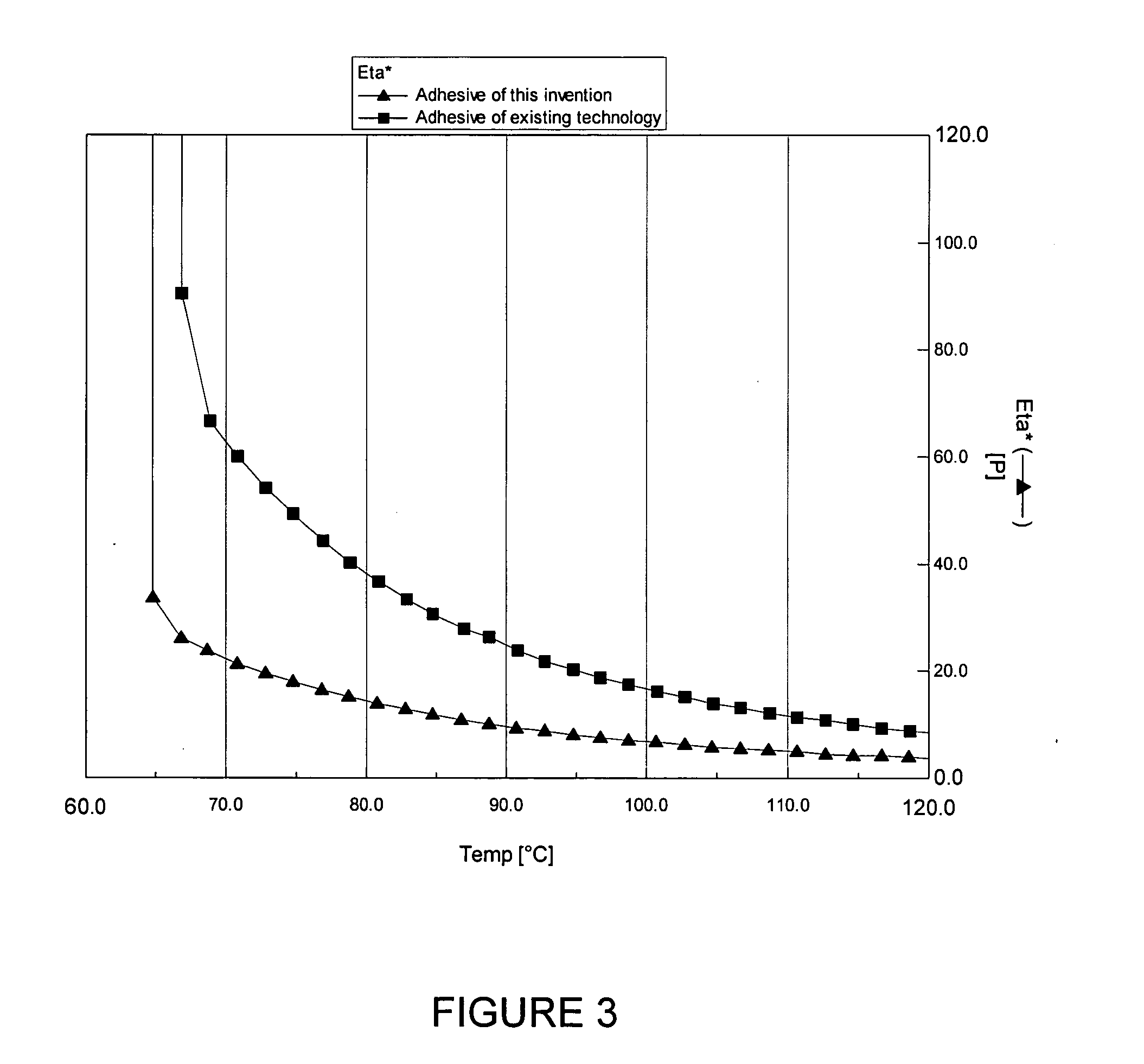Hot melt adhesive
a technology of hot melt adhesive and composition, which is applied in the direction of film/foil adhesive, transportation and packaging, chemistry apparatus and processes, etc., can solve the problems of increasing operator risks, increasing the demands on manufacturing facilities, and requiring more energy, and achieves high melt point, low cost, and energy-saving effects
- Summary
- Abstract
- Description
- Claims
- Application Information
AI Technical Summary
Benefits of technology
Problems solved by technology
Method used
Image
Examples
example 1
[0079] An adhesive of the invention was compared to the prior hot melt technology. FIG. 3 is a rheology trace of these two adhesives. Eta* refers to the viscosity of the adhesives and is shown as a function of temperature. The -▪-▪-▪- curve represents an adhesive of prior technology (National Starch 34-250A) and the -▴-▴-▴- curve is an adhesive of this invention (Table, Sample 2).
[0080] Both of these adhesives have equal heat stress values at 110° F. given by the test described above however the adhesive of this invention (-▴-▴-▴-) has a significantly lower viscosity above its melt temperature. The melting temperature corresponds to the vertical segment of the curves where the viscosity is decreasing rapidly with small temperature increases. This lower viscosity just above the melt temperature allows for the adhesive of this invention to be applied at 200° F. while the adhesive of prior art must be applied at least at about 250° F. or greater. The difference between application tem...
example 2
[0081] Adhesive samples were prepared in a single blade mixer and heated until components yield a homogeneous mixture.
[0082] Adhesive formulations (Samples 1-10) of the invention were prepared by blending wax (35 wt. % Pacemaker 53), ethylene copolymers (20 wt. % Enable EN 33900 and 10 wt. % Escorene XX-65.12) and the components shown in Table 1 at temperatures of 200° F. under low shear. Results are show in Table 2. As can be seen in Table 2 the adhesives of the invention have delta values less than 100° F. with full adhesion.
TABLE 1SampleMaterial12345678910Norsolene M-10903525——2025—2525—TK-110H——352515—25———Sylvalite RE 110L—10—10——————Limed Resin No. 1—————10————Dertocal 140——————10———Zincogral Zn 9———————10——Tamanol 521————————10—GB-120—————————35
[0083]
TABLE 2Viscosity @Adhesion toApplicationHeat200° F.(cps)paper boardTemperatureStressdeltaSample 11165full200° F.110° F.90° F.Sample 21210full200° F.115° F.85° F.Sample 31130full200° F.110° F.90° F.Sample 41175full200° F.110° F...
example 3
[0084] Adhesive formulations of the invention (Samples 11-13) were prepared by blending wax (35 wt. % Pacemaker 53), tackifier (35 wt. % Rutgers TK110H) and the components shown in Table 3 at temperatures of 200° F. under low shear. Results are show in Table 4. As can be seen in Table 4 the adhesives of the invention have delta values less than 100° F. with full adhesion.
TABLE 3SamplePercent ComonomerComonomerMelt Index11121328Vinyl acetate80015——28Vinyl acetate250015201835Butyl acrylate325—10—33Vinyl acetate400——12
[0085]
TABLE 4Sample111213Viscosity @200 F (cps)118012501390Adhesion to paper boardfullfullfullApplication temperature200° F.200° F.200° F.Heat stress110° F.115° F.110° F.delta 90° F. 90° F. 85° F.
PUM
| Property | Measurement | Unit |
|---|---|---|
| Temperature | aaaaa | aaaaa |
| Temperature | aaaaa | aaaaa |
| Temperature | aaaaa | aaaaa |
Abstract
Description
Claims
Application Information
 Login to View More
Login to View More - R&D
- Intellectual Property
- Life Sciences
- Materials
- Tech Scout
- Unparalleled Data Quality
- Higher Quality Content
- 60% Fewer Hallucinations
Browse by: Latest US Patents, China's latest patents, Technical Efficacy Thesaurus, Application Domain, Technology Topic, Popular Technical Reports.
© 2025 PatSnap. All rights reserved.Legal|Privacy policy|Modern Slavery Act Transparency Statement|Sitemap|About US| Contact US: help@patsnap.com



